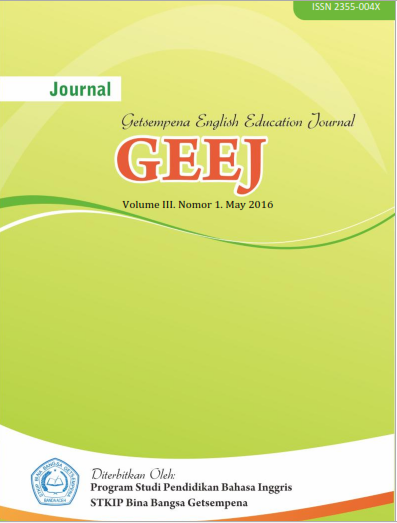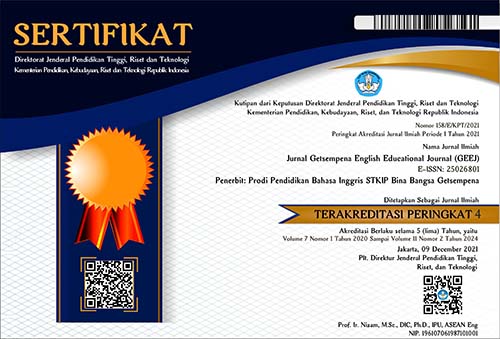AN OVERVIEW OF NUMBER HEADS TOGETHER IN LANGUAGE TEACHING
Abstract
Numbered Heads Together is a cooperative learning strategy that holds each student accountable for learning the material. Cooperative learning strategy promotes discussion and both individual and group accountability. It offers an alternative to the competitive approach of whole-class question-answer, in which the teacher asks a question and then calls on one of the students with a raised hand. In the numbered heads together approach, the teacher has students number off (e.g. 1-4), asks a question, and then tells the students to “put their heads together” to develop a complete answer to the question. When the teacher calls out a number, the students with that number raise their hands to respond. This structure facilitates positive interdependence, while promoting individual accountability. It also gives confidence to lower achievers because they know they will have the correct answer to give to the class. This study tries to indicate some theories based on experts definition about understanding of cooperative learning, the purpose of cooperative learning, understanding of number heads together (NHT), and characteristic of NHT technique.
References
Holt, D., Chips, B., & Wallace, D. (1991). (Paragraph 14).
Holt, D., Chips, B., & Wallace, D. (1991). “Cooperative learning in the secondary school: Maximizing language acquisition, academic achievement, and social development.” National Clearinghouse for Bilingual Education Program Information Guide Series. Number 12, Summer. [return]
Kagan, S. (1989). “The structural approach to cooperative learning.” Educational Leadership. 47(4): p. 12-15.
Kagan, S. (1989). “The structural approach to cooperative learning.” Educational Leadership. 47(4): p. 12-15
Kagan, S. (1989). “The structural approach to cooperative learning.” Educational Leadership. 47(4): p. 12-15.
Slavin, R. (1994). Using Student Team Learning. 4th ed. Baltimore: Johns Hopkins University, Center for Social Organization of Schools.
























